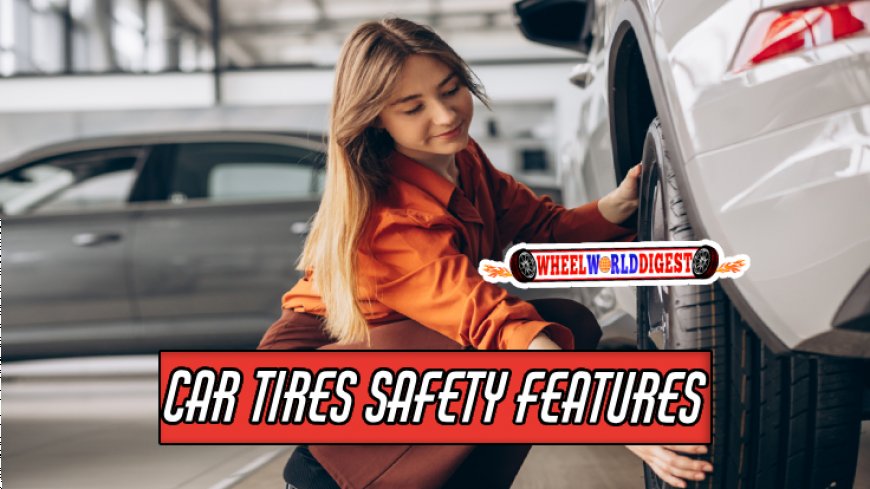Safety Features to Look for in Car Tires
This guide will help you identify the crucial safety features in car tires. Make an informed choice for a safer and smoother ride.

Ensuring the safety of your vehicle starts with one essential factor - your car tires. When looking to purchase new ones, it's not just about choosing the right size or design, you must also focus on their safety features. Knowing the key safety features can facilitate an informed decision for a safer and smoother ride. This article aims to shed light on the various safety features to look for in car tires.
Unveiling Key Safety Features in Car Tires
Despite the plethora of options available in the market, car tires with key safety features can drastically improve your driving experience. From wet traction and tread wear indicators to temperature resistance and speed ratings, there's a lot to consider before making a selection.
Table of Contents
- Understanding Tread Depth: The Lifeline of Car Tires
- Wet Traction: For Those Rainy Day Rides
- Significance of Tread Wear Indicators
- Temperature Resistance: A Safety Essential
- Speed Rating: Safety Beyond Speed
Understanding Tread Depth: The Lifeline of Car Tires

Tread depth plays a pivotal role in the overall safety of car tires. You may ask, "Why is that?" Treads are designed to provide your car with the necessary traction to grip the road effectively, especially under harsh weather conditions. When the depth of these treads reduces to a point where your tires cannot displace water or snow efficiently, your car can start to 'hydroplane'. Hydroplaning is a situation where your car skids or slides on a wet surface. So, maintaining an appropriate tread depth is crucial for optimal tire safety.
A new car tire generally has a tread depth of 10/32” or 11/32”. Various countries have their own legal minimum tread depth that a car should have. For example, in the United States, the legal minimum tread depth is 2/32".
How to Measure Tread Depth?
Good news! Measuring the tread depth is a simple process. Here is a quick step-by-step guide:
- Insert a penny between the tire treads with the Lincoln's head facing you and pointing downwards.
- Look at the penny. If the top of Lincoln's head is visible, it means your treads are shallow and possibly under the safe limit. It's high time to replace your tire.
- If the top of Lincoln's head is covered by the tread, then you're good to go!
Remember, regular checkups can ensure longer life for your car tires and a safer journey for you.
Wet Traction: For Those Rainy Day Rides

Are you the kind who enjoys long drives on rainy days? It's beautiful, but it can also be dangerous if your car tires fail to display excellent wet traction. Wet traction can be defined as the tire's ability to grip onto the road when there's water between your tires and the road. The tread pattern plays a significant role here. If the tread channels are designed effectively, they will swiftly remove water from under the tire, increasing the tire's grip on the road.
How to Check for Wet Traction?
The easiest way to check for wet traction is to look at reviews or ratings. Several organizations, such as Consumer Reports or Tire Rack, provide wet traction ratings for various tires. You can even ask the tire dealer or manufacturer for more information. Do your homework before making your tire purchase, especially if you live in an area prone to heavy rainfall.
Significance of Tread Wear Indicators
"When is the right time to change my car tires?" - probably one of the most frequently asked questions by car owners. A prime factor to consider here is the tread wear indicators. These are raised bars—about 2/32" high—that are built into your tires. As your car tires wear down, these indicators become visible, indicating it's time to get new car tires.
Remember, worn-out treads can significantly reduce your vehicle's performance and, more importantly, compromise on safety. So, next time before you hit the road, take a few minutes to check these indicators. Your safety is in your hands.
Temperature Resistance: A Safety Essential
Extreme temperatures can pose a serious threat to car tires. Whether it's scorching summer heat or bone-chilling winter cold, tires need to withstand any weather condition thrown their way. Temperature resistance is, therefore, an essential safety feature to consider. This attribute refers to a tire's ability to resist the build-up of heat and its capacity to dissipate heat when running at high speeds or under considerable road friction.
Luckily, tire manufacturers address this by integrating specific tire grades: A, B, or C - 'A' being the highest grade. So, when you're out there selecting your car tires, make sure to ask for the tire's temperature grade.
Speed Rating: Safety Beyond Speed

The speed rating of a tire might seem all about performance, but there's more to it than just speed. It's about safety too. The speed rating indicates the maximum speed a tire can safely maintain over time. A higher speed rating implies that the tire has superior control and handling characteristics, which, in turn, means a more comfortable and safer ride.
- Tip: Remember, it's not advisable to install tires with different speed ratings, as it can disrupt your vehicle's handling.
Decoding the Speed Rating
Here's a small tip to decipher your tire's speed rating -most often, it's embedded in the tire's identification number. For instance, if your tire ID reads P195/60R16 63H, 'H' is your speed rating. Each letter corresponds to a maximum speed. 'H', for example, represents a maximum speed of 130 mph.
Other Noteworthy Safety Features
While the above features cover most aspects of tire safety, there are a couple more worth mentioning.
- Ride Comfort: Though not directly a safety feature, a comfortable ride often leads to safer journeys. Certain tires are designed to absorb road imperfections, leading to smoother and more comfortable rides.
- Fuel Efficiency: Fuel-efficient tires have a lower rolling resistance, which can potentially decrease the amount of fuel your vehicle uses. Besides being environmentally friendly, these tires also bring down ownership costs.
Wrapping Up
Buying car tires is not just about the brand or price point. It's about understanding the various safety features that come along with it—a critical aspect often overlooked. So, the next time you are on the market for car tires, look beyond the fancy terms and marketing jargon. Remember, the safest choice is always the best choice!
At WheelWorldDigest, we are committed to provide you with the most relevant and comprehensive information pertaining to the automotive industry for a safer and smoother ride. Stay tuned for more insights!
What's Your Reaction?









































































